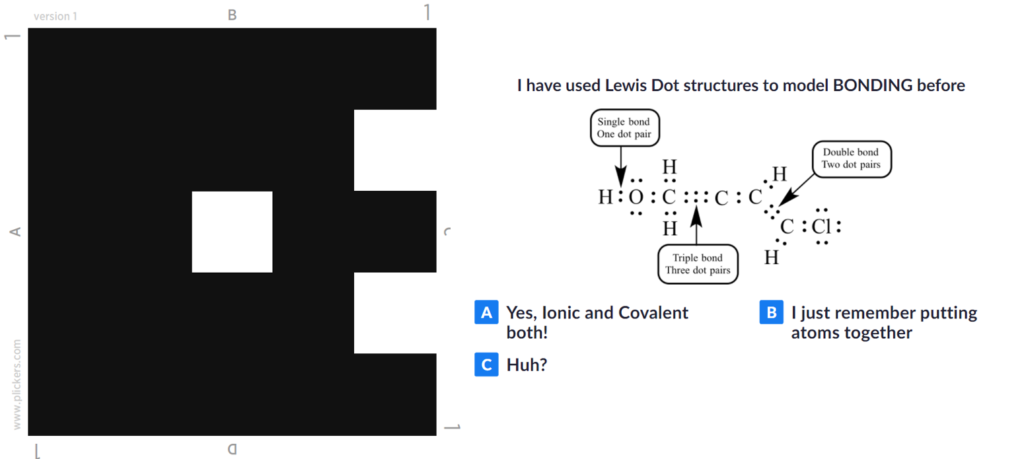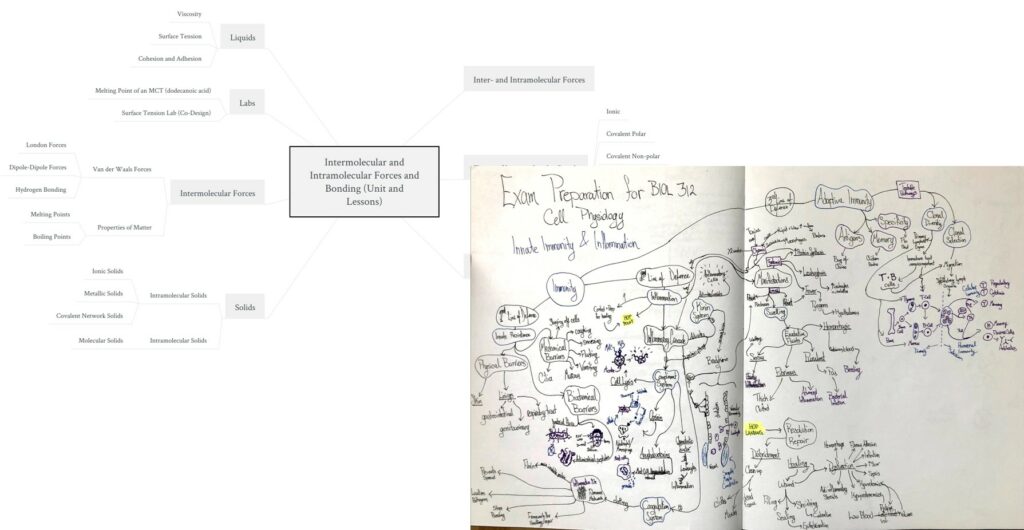Value and Goals: Digitizing the classroom
Over the past decade, I have spent a significant amount of my time rediscovering and refining my own learning process using technology. I greatly value the agency and autonomy over my own learning that I have developed using technology and, as an educator, my goal is to extend the integration of technology into my classrooms to provide learners with the tools and skills to do the same.
Upon my first practicum experience in the B.Ed. program at UNBC, I became reminded of the latency between what is technologically current and what is technologically available or integrated into public education—at least where I currently live, in School District 57 of BC. Having spent years learning through a virtually paperless education, the transition back to a system of print was both uncomfortable and frustrating. The level of unnecessary waste accumulated by not digitizing significant proportions of the K-12 curriculum is an obvious negative attribute; however, what struck with me more was how significantly organization and efficiency was compromised by still using a print-dominant system. The digitization of education is only advantageous to the learning when integrated appropriately. Outlined below are a few characteristics of K-12 education that may be potentiated through digitization.
Digital Notes:
I would argue that the digitization of notes has both benefited and harmed learning. On one side, having students copy and record their own notes on a piece of paper engages them in auditory, visual, and kinesthetic learning styles by listening, reading, and writing, respectively. Accessing multiple learning styles may present as an advantage, however, there is a large body of scientific literature contradicting the validity and existence of evidence for learning-style based assessment. Furthermore, I can confidently say from personal experience that when asked to record large quantities of written notes, my attention becomes singular on the mechanical act of copying words while all thinking and conceptualizing becomes latent. Understanding that many students enjoy and benefit from long-form note taking while others suffer, the digitization of note taking can be used to mitigate the diversity of learners—those who wish to write or type may do so, while others may screenshot images, take pictures, integrate links, or add cliff notes. One of the striking advantages of digital notes is the opportunity to embed learning resources. Where overhead projectors offered a two-dimensional space to write and draw with markers, digital notes can instantaneously provide complex imagery, videos, simulations, recordings, GIFs, interactive components, surveys, links, and more. The negative impacts of digital notes arise from a misunderstanding of how they should be used. This misunderstanding is commonly exemplified in university courses where the professor creates lecture slides to deliver content. While this form of delivery may have clear advantages (like the ones mentioned above), it is also a way of taking the same “projector-style notes” used before and delivering them at incomprehensible speeds without obligation to provide context or explanation. Therefore, it is important that digital tools for educational use are only used when they actually benefit the quality of learning and not only the speed of delivery, say.
Feedback:
During my first teaching practicum, I explored different methods of engaging with students and acquiring feedback on learning. During lessons, I would consistently ask open questions to the class that related to the immediate learning at hand. These questions were aimed at encouraging class participation and engagement while simultaneously providing formative feedback on individual and class understanding. However, it did not take long for me to recognize my open questions were working wonders for all of about three of twenty-seven students willing to speak out and were biasing my perceptual feedback of class-wide understanding. I thought of mitigating this problem by selecting specific students to answer, however, it being my first week, I had not learned all student names and also recognized that putting students on the spot could sometimes be harmful and just as biased in terms of formative assessment.
Having all students answer my questions would clearly be optimal, but by employing something like a class-wide “show-of-hands” response, students will often look to other students to conform their answers, and as a teacher, the time it would take to record how students individually responded makes a visually estimated class average the only feasible piece data to collect. This problem was easily and effectively solved using an app called Plickers. Plickers is a digital educational tool that allows the user (teacher in this case) to make choice-selection questions or surveys that include images and videos. Questions or surveys are then responded to by students using printed QR codes which are held in a specific orientation to relay a specific choice and is then read by a device’s camera (I.e., teacher’s cell phone using the Plickers app). The response data is then automatically collected and summarized in graphical form, noting and saving the response of each individual student. The advantage to using Plickers in the classroom was that everyone was able to participate, feedback data was collected both efficiently and effectively, answers were anonymous to student-peers, and students were not required to own any special technology (like a cell phone) to participate; the negative aspect is that the questions need to be created in advance. This is a clear example of how digitizing education can make classrooms more inclusive while providing more robust feedback that is more resistant to error and bias.

Resources and Organization:
One of the frustrations I experienced from not having access to digital communications with students was the time and effort it would take to share and use digital resources. During my experiential practicum teaching Chemistry 11, there were daily occasions where I would provide students with videos, simulations, or other online learning tools to support their understanding. Sometimes, students would deeply benefit from these resources by exploring them on their own or using them as a study tool at home. On occasion, I would handwrite a recommended URL or ask certain students to make specific Google searches on their own time, but the disjointedness and inefficiency made this type of resource sharing inconsistent and a hassle. Although I was told that each student had their own district-provided email account (Microsoft account where they can personally access Office applications), the access to computers was extremely restricted and despite each student owning a cell phone, nothing had been set up or tried technologically prior to my arrival. Because each student did own a cell phone, integrating programs like Microsoft OneNote into a classroom was completely feasible, despite the school not having an adequate technological infrastructure. This way, class folders and sections could be created in OneNote that would efficiently and effectively allow me to distribute differentiated learning tools to individual or groups of students to access anytime.

This type of accessible and collaborative software, like OneNote, can increase learning efficiency and organization across endless areas of education. When thinking back to my own high school experience, the points of greatest disorganization among students were lockers and binders. Although some students maintained meticulous, pristine, colour-coded organization in their binders, many students had binders that more resembled a landfill turned bomb testing site. By having electronic resources, notes, and assignments, not only does the binder organization problem become obsolete, but students can also access their notes and resources indefinitely into the future with no more effort than performing a simple Ctrl-F search. Obviously, organization is a skill but having all students equally well organized in a classroom is idealistic and simply never going to happen. If the curriculum asks for the education to be focused on science and an organized binder adversely influences that process, then using tools that expedite and simplify these side processes should be considered and implemented so more energy and focus can be applied to actual learning.
Values and Goals
I value maintaining agency over my ability to learn. As someone who has often struggled engaging and learning through traditional forms of learning, —like long form note taking—and someone who has systematically collected and developed tools and methods for learning during university and my personal life, I strongly believe that the appropriate integration of technology into education is the most effective tool for differentiated learning. There is no escaping the integration of technology in our lives during the 21st century, and it is full of uncertainties, misinformation, and potential. Educating students today without the use of technology is not only inefficient, but it is preparing them to work and live in a historic society that no longer exists and is therefore a disservice. My goal is to continue to integrate modes of technology into my classrooms so that time spent on actual learning is drastically increased, students requiring differentiated access to learning have infinite access to opportunity, collaboration is easier, and that formative assessment and feedback is ongoing, immediate, and more resistant to error.
Currently, I am familiar with a large number of digital tools that may be implemented in schools and have observed how other teachers have integrated programs like Microsoft OneNote and Teams into their classrooms. I believe that by allowing students the opportunity to spend more time focusing on learning in formats that satisfy their individual needs will be the most powerful tool for them developing agency and autonomy over their own learning going forward, because that is how I developed it. To meet my goal, I will develop integration protocols for introducing technological platforms into my classrooms. These protocols will be dependent on the classroom/school resources available and student demographic, and as most schools cannot provide accessible student computers, protocols will likely require the use of student cell phones, home computers, class collaborative resources, and programs like Plickers that do not require student resources.
As my goal is to integrate effective use of technology into classrooms, I find my biggest weakness is that I dislike, or fail to understand, many of the digital tools available. Ironically, one of the primary intentions of technological integration is to support differentiated learning and instruction which means that my deterrence from certain digital tools satisfies my goals fundamentally; however, as the educator, it is my responsibility to allow students the opportunity to access tools that fit their needs in a controlled and safe environment, despite how disinterested in TikTok I might be. My strength is that I am highly open minded towards integrating new systems of learning and believe in the potentiality of beneficial outcomes through personal experience. I learn when I am engaged, and for me, technology has made engaged learning indescribably more accessible—so I do it all the time!